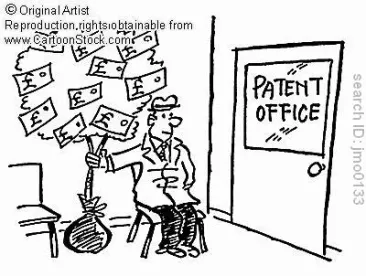The Federal Circuit decided not to disturb the “longstanding administrative construction” of 35 USC § 120 that permits the filing of a continuation application on the same day its parent application grants as a patent. The decision came in Immersion Corp. v. HTC Corp., where the district court held that the statute requires a continuation application to be filed before the parent application grants, even though the USPTO does not keep time-of-day filing records.
The Federal Circuit Decision
The Federal Circuit decision was authored by Judge Taranto and joined by Chief Judge Prost and Judge Linn.
The opinion provides a detailed analysis of the statutory construction issue that spans 10 pages, but the court’s main reasoning is summarized in this paragraph from page 2:
The statutory language does not compel, though it certainly could support, adoption of a day as the unit of time for deciding if filing is “before” patenting. And history is decisive in permitting the same-day-continuation result, under which, using units of time of less than a day, a “filing” is deemed to occur before “patenting.” The Supreme Court approved same-day continuations in 1863, and the 1952 Patent Act, which introduced section 120, was broadly a codification of existing continuation practices. And same-day continuations have been approved by a consistent, clearly articulated agency practice going back at least half a century, which has plausibly engendered large-scale reliance and which reflects the agency’s procedural authority to define when the legal acts of “filing” and “patenting” will be deemed to occur, relative to each other, during a day.
Although the court reaches the result that avoids invalidating 13,500 patents, it seems to do so almost reluctantly. For example, the opinion notes several times that the plain language of the statute is amenable to the district court’s construction, and indicates that it is reversing because of “the history bearing on the interpretive question.” In that regard, the Federal Circuit notes:
The Supreme Court has long recognized that a “longstanding administrative construction,” at least one on which reliance has been placed, provides a powerful reason for interpreting a statute to support the construction. Zenith Radio Corp. v. United States, 437 U.S. 443, 457–58 (1978); see McLaren v. Fleischer, 256 U.S. 477, 481 (1921). The Court has emphasized the weight of this consideration in patent law in particular. Warner-Jenkinson Co. v. Hilton Davis Chem. Co., 520 U.S. 17, 32 (1997); see Ariad Pharm., Inc. v. Eli Lilly & Co., 598 F.3d 1336, 1347 (Fed. Cir. 2010) (en banc). Investment-backed expectations and reliance interests in patent law are often strong. Festo Corp. v. Shoketsu Kinzoku Kogyo Kabushiki Co., 535 U.S. 722, 739 (2002); see Kimble v. Marvel Entm’t, LLC, 135 S. Ct. 2401, 2410 (2015).
The Federal Circuit also is careful to point out that “[t]his is not a case … where the language of the statute actually contradicts the longstanding judicial and agency interpretation. Nor is it a case in which the longstanding agency position is plainly outside the agency’s granted authority.” Rather, the court characterizes the issue as “essentially procedural one establishing when the agency will consider an input into its process (the legal act of “filing”) and an output of its process (the legal act of “patenting”) to occur relative to each other— neither one being a precisely identifiable self-defining physical act, but a legally defined event.”
Noting that “HTC’s position would disturb over 50 years of public and agency reliance on the permissibility of same-day continuations,” the Federal Circuit decided to “read section 120 to preserve, not upset, the established position.”




 />i
/>i

